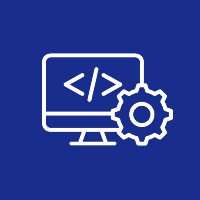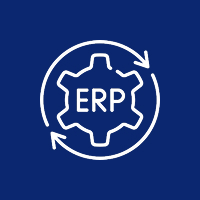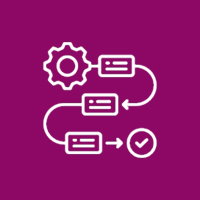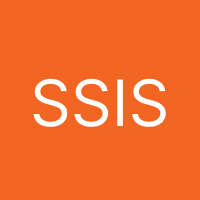In today’s time of the digital era, unauthorized users database security is of greatest importance for companies. With the growing instances of data breaches taking place, no other option but implementing stringent access control for safe-guarding secret data exists. Amongst the finest approaches of securing such actions is through Role-Based Access Control (RBAC)—an ordered security practice by which firms are able to limit user access depending on employment jobs.
RBAC in SQL gives the user data and operations required for their work only, thus reducing the security risk, preventing unauthorized modifications, and maintaining data consistency.
This tutorial will explain how to apply RBAC in SQL, benefits, and suggestions to end up with secure and strong database management.
What is Role-Based Access Control (RBAC)?
RBAC is a model of security where permission is granted to users based on roles defined and not direct access control. RBAC is easier to manage, more secure, and provides only required rights to users.
Important points of RBAC in SQL
- Users – Users who require access to the database.
- Roles – Roles which define specific permissions (e.g., Admin, Manager, Analyst).
- Permissions – Which operations can roles do (e.g., Read, Write, Delete, Update).
- Role Hierarchy – Some roles inherit from others (e.g., the Manager role might inherit Analyst permissions).
By organizing access control in this way, organizations can more easily enforce security policy, reduce data breaches, and simplify database management.
Benefits of Implementing RBAC to SQL
Adoption of RBAC in SQL databases has many advantages and is hence a best practice with firms dealing with confidential data.
1. Improved Security
RBAC reduces the exposure to risks since it restricts users from looking at data other than that related to their business line. Attempting malicious accesses of unauthorized data is prevented, lessening exposures.
2. Streamlined Users Management
Rather than assigning rights to users, roles are assigned with predetermined privileges, and access modification is easier when employees switch jobs or retire from the company.
3. Compliance
Several industries such as healthcare (HIPAA), finance (PCI-DSS), and data privacy (GDPR) demand rigid access control. RBAC assists companies in adhering to compliance by imposing organized permission management.
4. Enhanced Audit and Monitoring
With RBAC, administrators can easily track user activities and monitor access logs, ensuring accountability and detecting suspicious behavior.
5. Scalability and Adaptability
RBAC is highly scalable, making it suitable for growing businesses. As an organization expands, new roles can be created, and users can be reassigned without disrupting workflows.
What is Role-Based Access Control (RBAC)?
RBAC is a model of security where permission is granted to users based on roles defined and not direct access control. RBAC is easier to manage, more secure, and only grants required rights to users.
Important points of RBAC in SQL
- Users – Users who require access to the database.
- Roles – Roles which define specific permissions (e.g., Admin, Manager, Analyst).
- Permissions – What operations can what roles do (e.g., Read, Write, Delete, Update).
- Role Hierarchy – Some roles inherit from others (e.g., the Manager role can inherit Analyst permissions).
By organizing access control in this way, organizations can more easily enforce security policy, reduce data breaches, and simplify database management.
Benefits of Implementing RBAC in SQL
Applying RBAC to SQL databases has numerous advantages and is thus a preferred practice with companies dealing with sensitive data.
Deploying Role-Based Access Control (RBAC) in SQL
Deploying RBAC to SQL means specifying roles, assigning permissions, and applying security policies to protect sensitive information. To deploy a systematic access control system, do the following:
1. Define User Roles and Permissions
Begin with all the roles that are needed within your organization and the privileges they should receive.
Standard SQL Roles:
- Administrator – Complete access to database operations, including managing users.
- Manager – Able to read, modify, and authorize data but unable to delete records.
- Analyst – Restricted read-only access for reporting and data analysis.
- User – Restricted access to certain tables with restricted rights.
Well defining roles avoids users getting more access rights than they need and avoids unauthorized use.
2. Define Roles in SQL
Don’t give privileges to users directly; define roles instead and grant roles with corresponding privileges. It makes permission administering easier and keeps it secure.
3. Grant Permissions to Roles
Assign roles and then assign permissions accordingly to a role. Privilege should be granted only for a need so that the users would not take unauthorized actions.
4. Map Users to Roles
Once roles are assigned, the users can be mapped in terms of job roles. When the employee is promoted or reorganized to some other department, by changing his/her role only, it assures him/her that he/she has been provided with the correct access privilege.
5. Enforce Security Policy and Audit Access
Periodically review and sync user roles to enforce security policy. Log access and permission modifications for monitoring of suspicious activity.
Best Practices to Implement RBAC in SQL
To gain optimum security and effectiveness, organizations can implement RBAC in SQL most effectively by adhering to the following practices:
1. Obey the Principle of Least Privilege (PoLP)
Grant users the lowest required privilege level to fulfill their work responsibility. Don’t offer overly permissive rights that will undermine security.
2. Use Database Views to Restrict Data Access
Rather than offering direct table access, utilize SQL views to restrict what information is accessed and modified by users.
3. Log and Monitor
Offer database logging to monitor user actions such as login attempts, data changes, and access refusal attempts.
4. Periodic Role Audits
Regularly audit user roles and permissions to remove stale access and prevent privilege creep.
5. Secure Database Connections
Encrypt all database connections with SSL/TLS to protect data transfers from interception.
6. Automate Role Assignments
Assign roles and provision users through identity management software or scripts automatically, minimizing inconsistency.
Conclusion
Role-Based Access Control (RBAC) in SQL is necessary to protect databases, have appropriate control over user access, and remain compliant with regulatory requirements. Role-based access control within organizations offers reduction in security, protection against unauthorized data changes, and determination of data integrity.
RBAC eases the handling of users, increases auditability, and supports an extensible security model for small and large businesses. If best practices are applied, for example, utilizing the principle of least privilege, providing monitoring support, and utilizing role assignments automated, companies can establish a secure, well-governed SQL database system.
Contact Us Today













 Database Development
Database Development












































